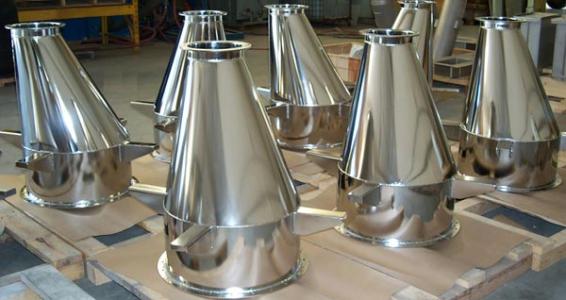Electrolytic polishing is the anodic etching of metal parts under specific conditions. This process can improve the micro-geometry of the metal surface and reduce the micro-roughness of the metal surface, so as to achieve the purpose of making the surface of the part bright.
Electropolishing is commonly used for decorative finishing of steel, stainless steel, aluminum, copper and other parts or coatings of copper, nickel, etc., surface finishing of some tools, or for making highly reflective surfaces and for making metallographic test pieces. Wait.
In many cases, electropolishing can be used to replace heavy mechanical polishing, especially for parts that are more complex in shape and difficult to machine by mechanical means. However, electropolishing does not remove or mask surface defects such as deep scratches and deep pitting, nor can it remove non-metallic inclusions in the metal. In a multiphase alloy, when one phase is not easily dissolved by the anode, the quality of the electropolishing will be affected.
Chemical polishing is the chemical etching of metal parts under specific conditions. During this etching process, the metal surface is etched and leveled by the solution, resulting in a relatively bright surface.
Chemical polishing can be used for surface finishing of instruments, aluminum mirrors, and decorative processing of other parts or coatings.
Compared with electropolishing, the advantages of chemical polishing are: no need for external power supply, can handle more complex shapes, high production efficiency, but the surface quality of chemical polishing is generally slightly lower than electrolytic polishing, and solution adjustment and regeneration are also compared. Difficulties, harmful gases such as nitrogen oxides are often precipitated during the polishing process.
During the electropolishing process, a thick mucosa having a high electrical resistivity is formed on the surface of the anode. The thickness of the microscopic convex portion of the surface of the mucosa is small, and the thickness of the microscopic concave portion is large. Therefore, the microscopic distribution of the current density is also uneven. The microscopic convex part has higher current density and faster dissolution, while the microscopic concave person has lower current density and slower dissolution, so that the microscopic convex portion is reduced in size faster, and the micro concave portion is reduced in size. In order to achieve the purpose of smoothness and light.
During the chemical polishing process, or due to the formation of a non-uniform passivation film on the microscopic surface of the metal; or due to the formation of a thick mucous film formed during the electropolishing process, the dissolution rate of the microscopically convex portion of the surface is significantly greater than that of the microscopic The concave part, thus reducing the micro-roughness of the surface of the part, making the surface of the part relatively bright and flat.





